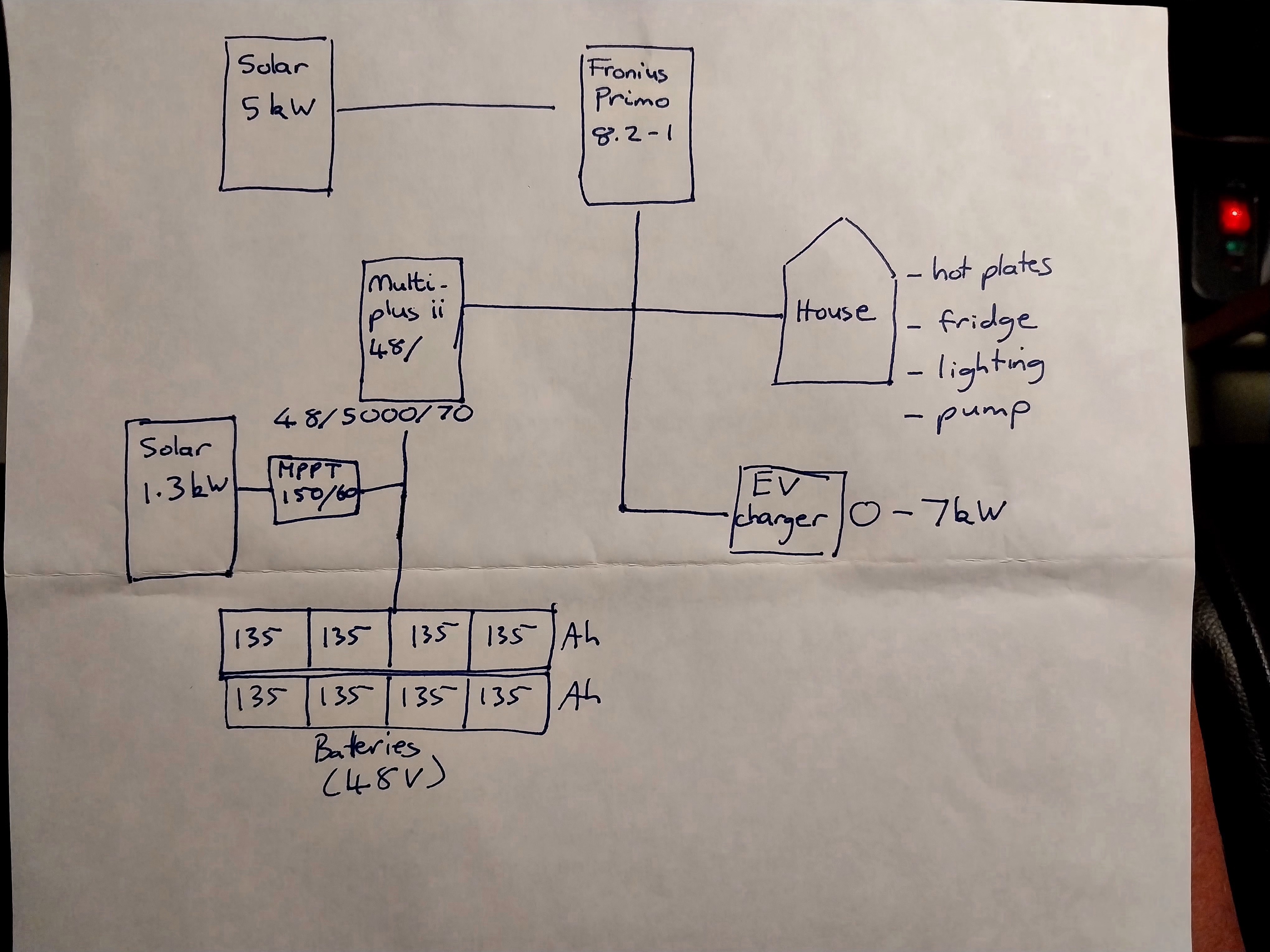We have a Fronius Primo 8.2 fed by approx 5kw of solar, coupled to a microgrid consisting of a 5kva Multiplus II, 1.3kw solar panels and eight 135Ah 12v AGM batteries. The Primo is set to MG50 and the Multiplus has been configured as a microgrid. We used this set up to successfully charge our EV for the first time two days ago. Everything worked, with the Primo generating 4-4.5kw most of the time, and the smaller solar system that feeds the battery bank via an MPPT picking up the slack to supply most of what the charger needed. The car wound down charging gradually, and presumably as whatever slight deficit there was in the battery bank was topped up, the Primo gracefully throttled itself, with the lights on the Multiplus changing from bulk, to absorption, to float, and the display on the Primo showing 0w in the absence of all loads. What more could we want? The following day we wanted to use our set up to run a 1.5kw transfer pump for an extended period. When we switched the Primo on the batteries were already full, but the Primo began hammering them with around 1800w, and the Multiplus showed bulk charging. The batteries began making a bubbling, sizzling sound – not good at all! Why didn’t the Multiplus tell the Primo via frequency shifting that it didn’t need to be pumping juice into the batteries? We had made two small changes via VEconfigure after our successful EV charging session, but can’t see how they relate to this sudden departure from proper functioning. 1. We raised the battery voltage at which the Multiplus shuts down and re-starts after a shutdown, to offer the batteries better protection. 2. The battery type was unspecified, so we changed that to AGM/Gel. After the Primo decided to boil the batteries we made one further change, altering the rate at which the Primo can charge the batteries from 70amps down to 10amps. This made no difference to its desire to overcharge the batteries, but at least the reading it gave was a bit lower, at around 800w. We weren’t able to use the Primo for the pump today, and had to rely on the smaller solar system attached to the Multiplus instead. We are stumped. Can anyone please shed some light?
One further question, if I may: Is there any other reason for the 1.0 rule than to protect against voltage spikes in the event a load that has been consuming the PV yield is suddenly removed and the Multiplus is not rated to accept that yield? If such sudden events could be managed to give the Multiplus time to respond, would it be viable to have, say, an 8kw solar array behind the Primo?
All help much appreciated.

